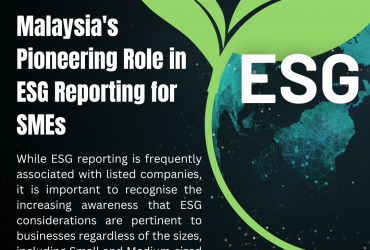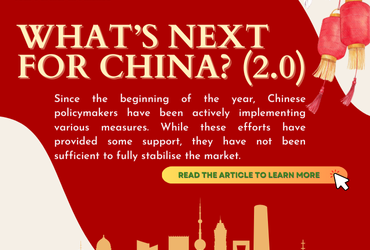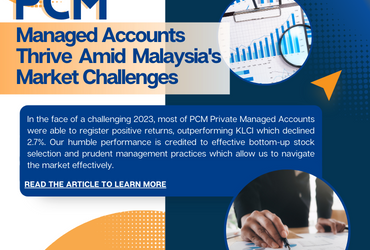
Since 13 June 2025, Israel has launched military operations against Iran aimed at halting its alleged nuclear breakout. Thus far, Iran’s oil production and export infrastructure remains largely untouched, as Israeli strikes have focused on neutralizing military and nuclear facilities. Crude loadings from Iran’s key export hub at Kharg Island continue without disruption, suggesting that the market has not yet experienced a physical supply shock.
As of 20 June 2025, Brent crude has risen by approximately USD 10 to USD 79/bbl since the conflict began. This increase reflects the market’s pricing-in of future disruption risk rather than any immediate supply constraint. On 22 June, the United States joined Israel in striking Iranian nuclear sites in Fordow, Natanz, and Isfahan. While impactful, the U.S. described these as limited and not indicative of broader escalation or a push for regime change.
We believe a direct conflict between the U.S. and Iran remains unlikely, as such an outcome could threaten the stability of the Iranian regime, which has already seen significant military degradation. The diplomatic path remains the preferred resolution, though this hinges on Iran’s willingness to negotiate under pressure.
In the short term, risks of regional escalation persist. Iran may attempt indirect retaliation through proxies such as the Houthis, though Red Sea shipping routes have already been largely avoided due to prior hostilities. While Iran has also threatened to damage oil infrastructure in neighboring Gulf states if its exports are curtailed, such actions appear improbable, especially as Israeli operations have so far avoided targeting energy assets directly.
Should diplomacy gain traction, oil prices could soften. This would be supported by OPEC+’s scheduled production increases of 0.411 million barrels per day in May, June, and July, as well as moderating global demand amid weaker economic growth and the dampening effects of the U.S. “Liberation Day” tariffs.
However, if Iran maintains an aggressive stance or retaliates directly, oil prices could spike further. The U.S. might respond by targeting Iran’s shadow tanker fleet or imposing secondary sanctions on major buyers of Iranian crude, such as China. This would threaten 1.5 to 1.8 million barrels per day of Iranian exports. Even in such a scenario, a prolonged price surge is not guaranteed, as OPEC+ has the capacity to ramp up production quickly in response.
The potential for oil prices to breach USD 80/bbl raises concerns about renewed inflation pressures. While a short-term shock is possible, the broader economic impact may remain limited. An oil price around USD 80 is unlikely to materially curb consumption or investment, especially as it reflects 2024 average levels that were not overly disruptive to global growth. While many global peers have begun cutting rates, the Fed has yet to act, raising fears it may lag in policy response. Given that energy constitutes about 7.5% of the U.S. Consumer Price Index, sustained higher energy prices could delay easing efforts, especially amid slowing global growth. The lessons of 2021–22, when central banks underestimated the persistence of energy-driven inflation, remain fresh.
Energy Security vs Sustainability: A Dilemma for ESG Investors
The ongoing crisis has reawakened fundamental questions within the ESG investment community. With geopolitical risks mounting and energy supply stability back in focus, investors and policymakers are being forced to reassess ESG priorities. The core tension lies in balancing long-term environmental goals with short-term energy security.
Despite over USD 5 trillion invested globally in green energy over the past two decades, fossil fuels still account for more than 80% of global energy consumption. Clean energy investment is expected to exceed USD 2.2 trillion in 2025—twice that of fossil fuels. However, underinvestment in oil and gas capacity has led to structural vulnerabilities in the energy market. As demand recovers and supply remains tight, the fragility of relying too heavily on renewables without sufficient backup infrastructure is becoming more apparent.
This has triggered a reassessment of ESG frameworks. Some investors argue for a more pragmatic approach—incorporating transition fuels like natural gas or recognizing nuclear energy as a low-carbon alternative. Others highlight the importance of updating ESG scoring models to include energy resilience and geopolitical risk as key variables.
Navigating the ESG Reset
The U.S.–Iran escalation has brought energy security back to the forefront of investment decision-making. It has exposed the vulnerabilities of current ESG frameworks that may not fully account for geopolitical and supply-chain risks. At the same time, it has reinforced the urgency of accelerating the energy transition to reduce long-term exposure to such shocks.
Policymakers and investors are now grappling with tough choices: Should short-term supply stability take precedence, even if it means relying on traditional energy sources for longer? Or should efforts be redoubled to push forward decarbonization and renewables?
The answer likely lies in a balanced approach. ESG frameworks will need to evolve—recognizing that energy stability, geopolitical resilience, and sustainability are not mutually exclusive, but interdependent goals. As capital continues to flow toward sustainable strategies, the focus will increasingly shift toward building portfolios that can withstand the realities of a more complex and uncertain world.
Identify investment opportunities – Phillip Managed Account for Retirement (PMART) and Phillip Managed Account (PMA) ESG
In line with the nation’s goal towards sustainability, Phillip Capital Management has integrated ESG factors that we attest as material and relevant for a company’s financial performance and long-term sustainability into our investment decision-making process. These include but not limited to ESG ratings by established index, environmental considerations (climate change, natural resources preservation, pollution & waste), social considerations (health & safety, community engagement, employee relations) and governance considerations (board independence, transparency & disclosure, shareholder rights).
Separately, PCM offers PMART and PMA ESG, a discretionary portfolio that invests in stocks with high ESG ratings from the F4GBM and F4GBMS Indices. There are both conventional and Shariah options available. PMART and PMA ESG is suitable for investors who want to optimise the risk-adjusted return by constructing a diverse sustainable portfolio of ESG companies. Exhibits 1-4 show the performance for PMART ESG Conventional and Shariah.
Exhibit 1: Phillip PMART ESG Conservative Portfolio Performance
| YTD | 1Y | 2Y | 3Y | 5Y | |
| Phillip PMART ESG Conservative Portfolio | -4.50% | 0.27% | |||
| F4GBM | -9.74% | -6.12% |
Exhibit 2: Phillip PMART ESG Aggressive Portfolio Performance
| YTD | 1Y | 2Y | 3Y | 5Y | |
| Phillip PMART ESG Aggressive Portfolio | -4.50% | -0.27% | |||
| F4GBM | -9.74% | -6.12% |
Exhibit 3: Phillip PMART ESG Shariah Conservative Portfolio Performance
| YTD | 1Y | 2Y | 3Y | 5Y | |
| Phillip PMART ESG Shariah Conservative Portfolio | -3.23% | 1.28% | |||
| F4GBMS | -10.19% | -8.87% |
Exhibit 4: Phillip PMART ESG Shariah Aggressive Portfolio Performance
| YTD | 1Y | 2Y | 3Y | 5Y | |
| Phillip PMART ESG Shariah Aggressive Portfolio | -5.09% | -5.78% | |||
| F4GBMS | -10.19% | -8.87% |
Source: PCM, 31 May 2025, link
Please click on the link to learn more or email us at cse.my@phillipcapital.com.my if you require any further information.
Disclaimer:
The information contained herein does not constitute an offer, invitation or solicitation to invest in Phillip Capital Management Sdn Bhd (“PCM”). This article has been reviewed and endorsed by the Executive Director (ED) of PCM. This article has not been reviewed by The Securities Commission Malaysia (SC). No part of this document may be circulated or reproduced without prior permission of PCM. This is not a collective investment scheme / unit trust fund. Any investment product or service offered by PCM is not obligations of, deposits in or guaranteed by PCM. Past performance is not necessarily indicative of future returns. Investments are subject to investment risks, including the possible loss of the principal amount invested. Investors should note that the value of the investment may rise as well as decline. If investors are in any doubt about any feature or nature of the investment, they should consult PCM to obtain further information including on the fees and charges involved before investing or seek other professional advice for their specific investment needs or financial situations. Whilst we have taken all reasonable care to ensure that the information contained in this publication is accurate, it does not guarantee the accuracy or completeness of this publication. Any information, opinion and views contained herein are subject to change without notice. We have not given any consideration to and have not made any investigation on your investment objectives, financial situation or your particular needs. Accordingly, no warranty whatsoever is given and no liability whatsoever is accepted for any loss arising whether directly or indirectly as a result of any persons acting on such information and advice.






